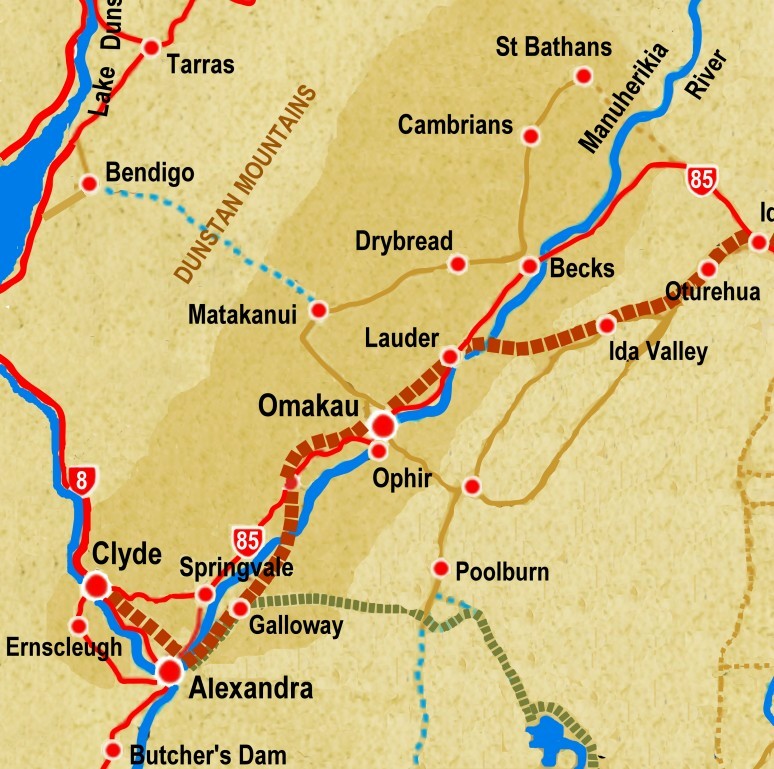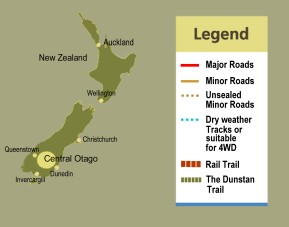
Introduction
|
The Dunstan
Introduction
The area known as The Dunstan stretches from Clyde into the Manuherikia Valley and was one of New Zealand’s richest gold fields. It was visited by Maori, who camped by rivers in summer and the earliest European settlers were sheep farmers whose runs extended over thousands of hectares. The discovery of gold at Lawrence in 1861 heralded a huge rush as more fields, yielding enormous quantities of gold, were found throughout Central Otago. Thousands of miners were lured here despite the extremely harsh climate and environment.
Many stayed to establish permanent townships on the sites of calico (cloth) settlements. The remains of those places and the scars left by mining operations still can be seen. Clyde, Ophir, and St Bathans are the most authentically preserved and significant gold rush settlements in New Zealand; little remains of many other settlements apart from their names and some ruins. Others have survived with a few permanent residents and old cottages now used as holiday homes. Some old buildings have become part of local farms. Gold prospectors and mining companies still search for gold in the district.
It is an area rich in the early European history of New Zealand.

